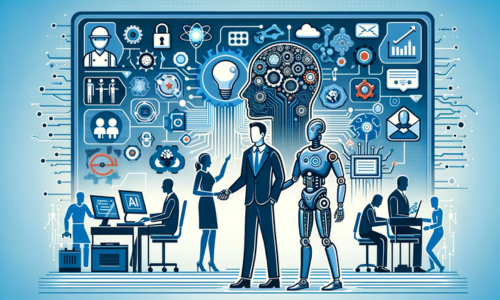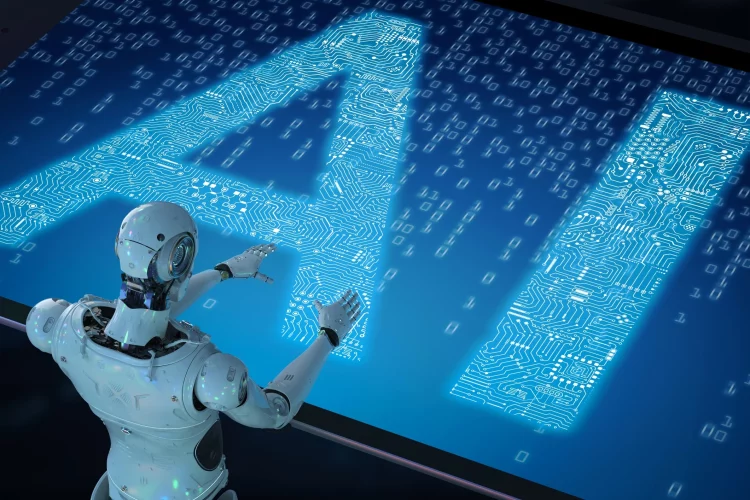Introduction: The Workplace at a Crossroads
Artificial Intelligence (AI) is no longer a futuristic concept—it is actively reshaping the modern workplace. From automating routine tasks to assisting in complex decision-making, AI is transforming how businesses operate and how employees contribute.
Yet, this transformation brings anxiety alongside opportunity. Will AI augment human labor, freeing us for creativity and problem-solving? Or will it replace workers, widening inequality and displacing traditional careers? The answers are complex, involving technological capabilities, economic structures, and social adaptation.
This article explores AI’s impact on employment, workplace dynamics, and human identity, presenting a structured analysis of challenges, benefits, and strategies for navigating a rapidly evolving professional landscape.
1. Understanding AI in the Workplace
AI in professional settings manifests in various forms:
- Automation of repetitive tasks: Robotic Process Automation (RPA) can handle data entry, scheduling, and reporting.
- Decision support: AI analyzes data patterns to guide business strategy, healthcare diagnosis, and financial forecasting.
- Collaboration tools: AI-powered assistants manage communications, summarize meetings, and track tasks.
- Creative augmentation: Generative AI produces design drafts, code snippets, and marketing content.
These applications blur traditional job boundaries. Roles that once required purely human judgment now involve collaboration with intelligent systems, demanding new skill sets and cognitive flexibility.
2. The Threat of Job Displacement
AI has raised concerns about widespread unemployment:
2.1 Sectors Most at Risk
Routine, predictable, and rule-based occupations are most vulnerable. Examples include:
- Manufacturing assembly lines
- Data entry clerks
- Customer service representatives
- Transportation operators (e.g., drivers with autonomous vehicles)
Estimates vary, but studies suggest up to 30–40% of current jobs could be affected by automation in the next two decades.
2.2 Economic and Social Consequences
Job displacement may lead to:
- Wage stagnation or reduction
- Increased income inequality
- Social unrest and psychological stress
Without proactive policies, AI-driven disruption could exacerbate existing disparities between skilled and unskilled workers, urban and rural populations, and technology-rich and technology-poor regions.
3. Augmentation Over Replacement
While fear of job loss dominates headlines, AI also offers significant augmentation opportunities:
3.1 Enhanced Productivity
AI enables humans to focus on high-value tasks:
- Analysts can interpret trends faster
- Healthcare professionals gain diagnostic support
- Creative professionals iterate designs efficiently
By offloading repetitive work, employees can apply judgment, creativity, and empathy—qualities that machines cannot replicate.
3.2 Collaboration with AI
AI tools function as partners rather than replacements. For example:
- Writers use AI to generate drafts, then refine content
- Engineers leverage AI simulations to optimize designs
- Financial advisors integrate AI risk models into strategic planning
Such collaboration can elevate performance and decision-making while maintaining human oversight.
3.3 Lifelong Learning and Reskilling
Augmentation demands continuous learning. Organizations now invest in AI literacy programs, enabling employees to:
- Understand algorithmic decision-making
- Analyze AI outputs critically
- Acquire complementary skills (e.g., emotional intelligence, problem-solving)
Countries and corporations emphasizing reskilling will benefit from a workforce that thrives alongside AI, rather than being replaced by it.
4. Ethical and Regulatory Challenges
AI in the workplace raises moral and legal questions:
4.1 Bias and Fairness
AI systems reflect the data they are trained on. If historical hiring practices are biased, AI may perpetuate discrimination in recruitment, promotions, or performance evaluation. Ensuring fairness requires continuous auditing and transparency.
4.2 Privacy and Surveillance
Workplace AI can monitor productivity, emails, and even emotional states. While intended to enhance efficiency, excessive monitoring can undermine trust, autonomy, and employee well-being.
4.3 Accountability
When AI-driven decisions fail, determining responsibility becomes complex. For instance, if an AI system recommends a financial investment that loses value, who is accountable: the programmer, the manager, or the algorithm itself?
5. Redefining the Human Role
AI challenges the traditional conception of work. Human labor is shifting from execution to judgment, creativity, and care:
- Creativity: AI can generate options, but humans provide context, originality, and purpose.
- Empathy and service: Professions like healthcare, counseling, and teaching rely on interpersonal skills AI cannot replicate.
- Strategic oversight: Decision-making often requires ethical judgment, balancing multiple stakeholders—a domain where human reasoning is essential.
In this sense, AI transforms work not by eliminating humans, but by redefining what is uniquely human.
6. Case Studies: AI Integration Across Industries
6.1 Healthcare
- Diagnostic AI assists radiologists in identifying anomalies
- Patient care AI manages scheduling and reminders
- Outcome: Faster, more accurate diagnosis while physicians focus on complex decisions
6.2 Finance
- Algorithmic trading identifies market opportunities in real time
- Fraud detection AI monitors unusual patterns
- Outcome: Analysts can make strategic decisions rather than purely transactional ones
6.3 Manufacturing
- Collaborative robots (“cobots”) work alongside human operators
- Predictive maintenance AI anticipates equipment failures
- Outcome: Increased efficiency, safety, and reduced downtime
These examples illustrate the hybrid model of human-AI collaboration, rather than full replacement.

7. Strategies for Workforce Adaptation
To thrive in an AI-integrated workplace, both individuals and organizations must adapt:
7.1 Skill Development
Focus on:
- Digital literacy and AI comprehension
- Problem-solving and critical thinking
- Creativity, communication, and emotional intelligence
7.2 Policy Initiatives
Governments can:
- Provide reskilling programs
- Support transition services for displaced workers
- Encourage equitable access to AI tools
7.3 Organizational Culture
Companies must:
- Promote human-AI collaboration
- Maintain transparency in AI-driven decisions
- Ensure employee trust and well-being
8. The Psychological Dimension
AI influences not only what we work on, but how we perceive work. Employees may experience:
- Job insecurity due to automation
- Enhanced engagement when routine tasks are offloaded
- New identity challenges, as human roles evolve
Organizations and policymakers must address these psychological impacts to ensure sustainable adoption.
9. The Global Perspective
AI-driven workforce changes vary by region:
- Developed economies may face displacement in white-collar roles
- Emerging economies may adopt AI to accelerate industrialization
- Developing regions risk being left behind without infrastructure and skills investment
International cooperation, knowledge sharing, and inclusive policies are vital to ensure AI benefits are globally distributed.
10. The Future of Work: Partner or Replacement?
The answer depends on approach and mindset:
- If AI is adopted as a tool: It complements human strengths, amplifying creativity, judgment, and problem-solving.
- If AI is treated as a cost-cutting measure: It may replace human labor, creating social tension and inequality.
Future workplaces will likely be hybrid ecosystems, where humans and machines co-create value. The challenge is not simply technological adoption, but reshaping culture, skills, and ethics to match the AI era.
Conclusion: Embracing the Human-AI Partnership
Artificial Intelligence is transforming work at an unprecedented pace. It challenges existing structures, disrupts traditional roles, and raises ethical dilemmas. Yet, it also offers unprecedented opportunities for productivity, creativity, and innovation.
The future is neither fully automated nor entirely human-centric; it is a partnership. Success depends on proactive adaptation: reskilling, ethical oversight, and fostering collaboration. By embracing AI as a partner rather than a replacement, humanity can redefine work in ways that enhance both efficiency and meaning.
AI will not render human labor obsolete — it will redefine it, emphasizing what machines cannot replicate: judgment, creativity, empathy, and the essence of human ingenuity.











































